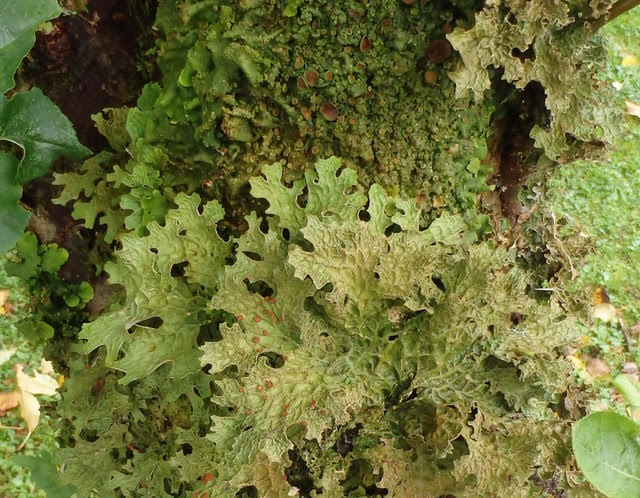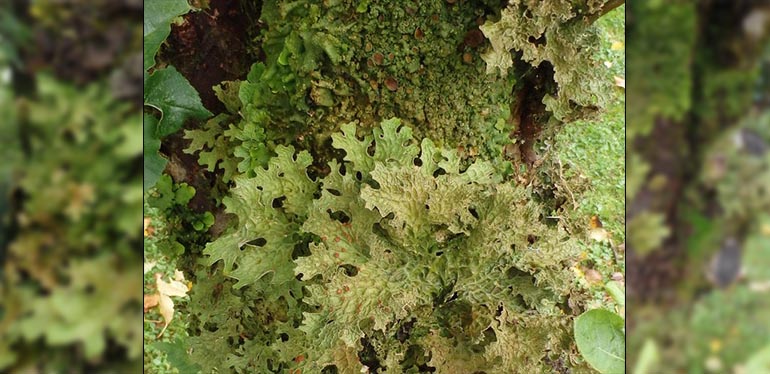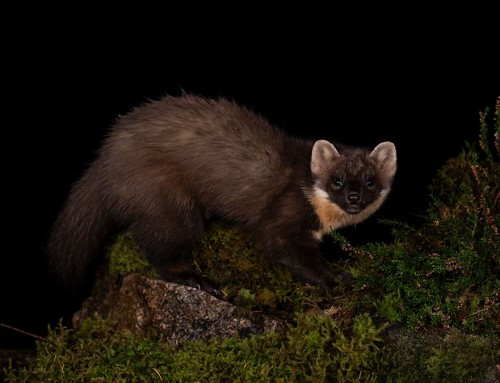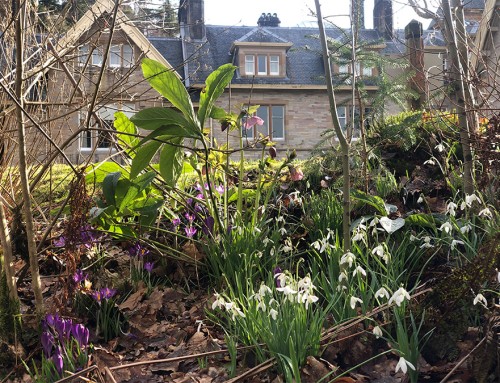Written by Sandy & Brian Coppins, Sandy is an internationally recognised lichen expert and recent visitor to the estate.
Reference: Atlantic Hazel – Scotland’s special woodlands
Lichens are amazingly varied in shape, form and colour. Ask anyone about lichens, and the usual answer is “Oh, very long-lived and indicators of clean air”. Both true but there’s a whole lot more to lichens than that – they are stunningly beautiful, but also enigmatic and curious organisms. They belong to a group of plants known as cryptogams: a word of Greek origins: crypt = Greek for ‘hidden’, and gams = Greek for reproduction, sex. So, cryptogams have ‘hidden sex’. But, they are amazingly good at it, and there are in Scotland alone, something like 1,800 species of lichen, which come in a huge variety of shapes and colours.
What is a lichen?
Just how do you say “Lichen”? Is it “hitchin’ for lichen” or “bikin’ for lichen”? Usually it is the latter pronunciation, but there is no hard and fast rule. A lichen is a combination of two organisms, a fungus and one (or more) alga. The fungus forms the body of the lichen (the bit you see) and the alga (hidden away inside the lichen body), manufactures the food for both of them. The alga makes the food by a process known as photosynthesis (another word of Greek origin, with photo = light; and synthesis = putting together). So how does it work? The alga uses the energy from sunlight to combine water and carbon dioxide in the air into carbohydrates (food).
Sounds like the fungus gets a good deal, but in fact, the fungus needs to protect its food-provider alga from
- desiccation in hot dry weather,
- drying winds,
- harmful UV rays,
- drowning in excessive wet conditions, and
- from the extreme cold and frost.
Furthermore, if you are a lichen sitting on a tree, or on rocks and boulders or on the ground in montane areas, just think of the extreme conditions that you will encounter, from harsh summer drought, torrential rain, dense wet fogs, to freezing frost and snow in the winter.
The fungus part of a lichen has adapted to grow to the maximum benefit of its algal partner. So, this is where varying arrangements of form and colour come in. Nobody knows exactly why lichens grow in the shapes and colours that they do, but we can make several educated guesses.
Different species will be found in different habitats, so, lichens growing on exposed montane heaths, or on rocks, will be different from lichens growing on trees – and pine trees will have different lichens to those growing on rowans – so, look carefully…….
The old Apple Tree
The old, craggy bark of the apple in the Kitchen garden supported a surprising number of lichens, 23 species!! The most noticeable is the Lungwort, Lobaria pulmonaria. This looks like flappy green lobes, rather cabbage-like leaves, but slightly roughened texture. The upper surface can also sometimes have small chestnut-coloured discs – these are the ‘fruiting bodies’, that is they are structures for the fungal spores to be liberated. The name ‘Lungwort’ was given as the undersides of the lobes resemble lung tissue (you can see this in one of the attached pics). The medieval ‘doctrine of signatures’ held that parts of plants that resembled parts of the human body, could be used to heal ailments. So, Lungwort was gathered, crushed into some decoction and given to people suffering from coughs or lung complaints.
Lungwort is on the Red List in Europe for endangered plants.
The old apple has several of the large, leafy-lobed lichens, as well as Lungwort, there is the Green Satin Lichen (Lobaria virens), and a couple of brown-lobed dpecies, known as Stinky Stictas (if you rub the lobes between your finger & thumb, you will smell a strong fishy smell). Apart from the large, obvious lichens, there are several smaller species, crustose lichens.

Apple tree trunk, with the Green Satin Lichen (centre top), the more raggedy and unruly lobes of Lungwort, and a cluster of Stinky Sticta.

Close-up of Lungwort (Lobaria pulmonaria) and you can see one lobe is partly turned to show the underside; above is another species of Sticta, S. limbata, a paler grey-brown with a fine pale flourey margin to the lobes.

Close-up of L. pulmonaria, showing the wonderfully crinkly upper surface, with rough texture along the tops of the raised ridges, plus the small chestnut-coloured fruiting bodies (apothecia); above is an old example of L. virens – its surface is generally smoother (satiny) than L. pulmonaria, but this old specimen has lots of fruiting bodies, sort of masking the surface.







